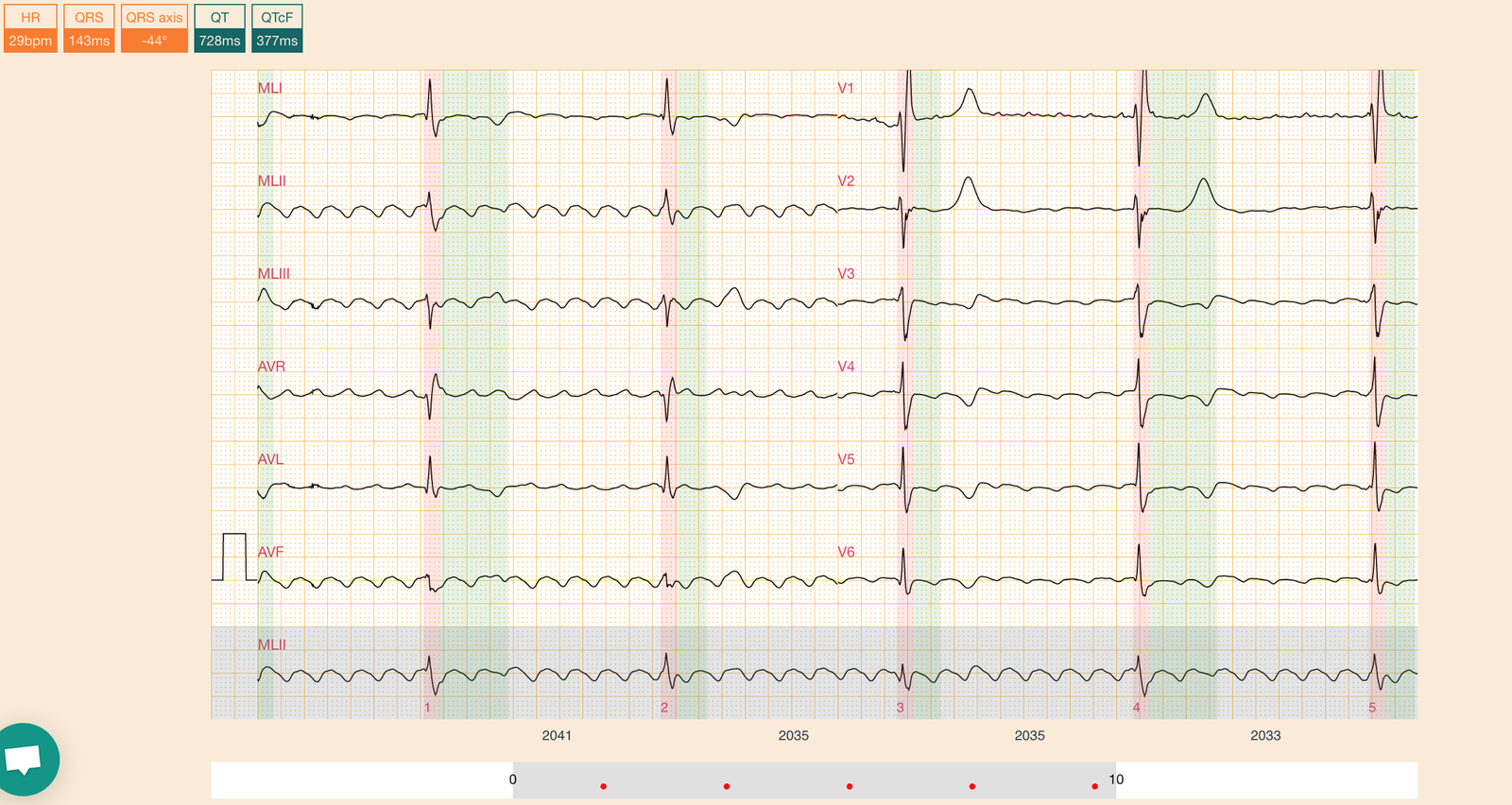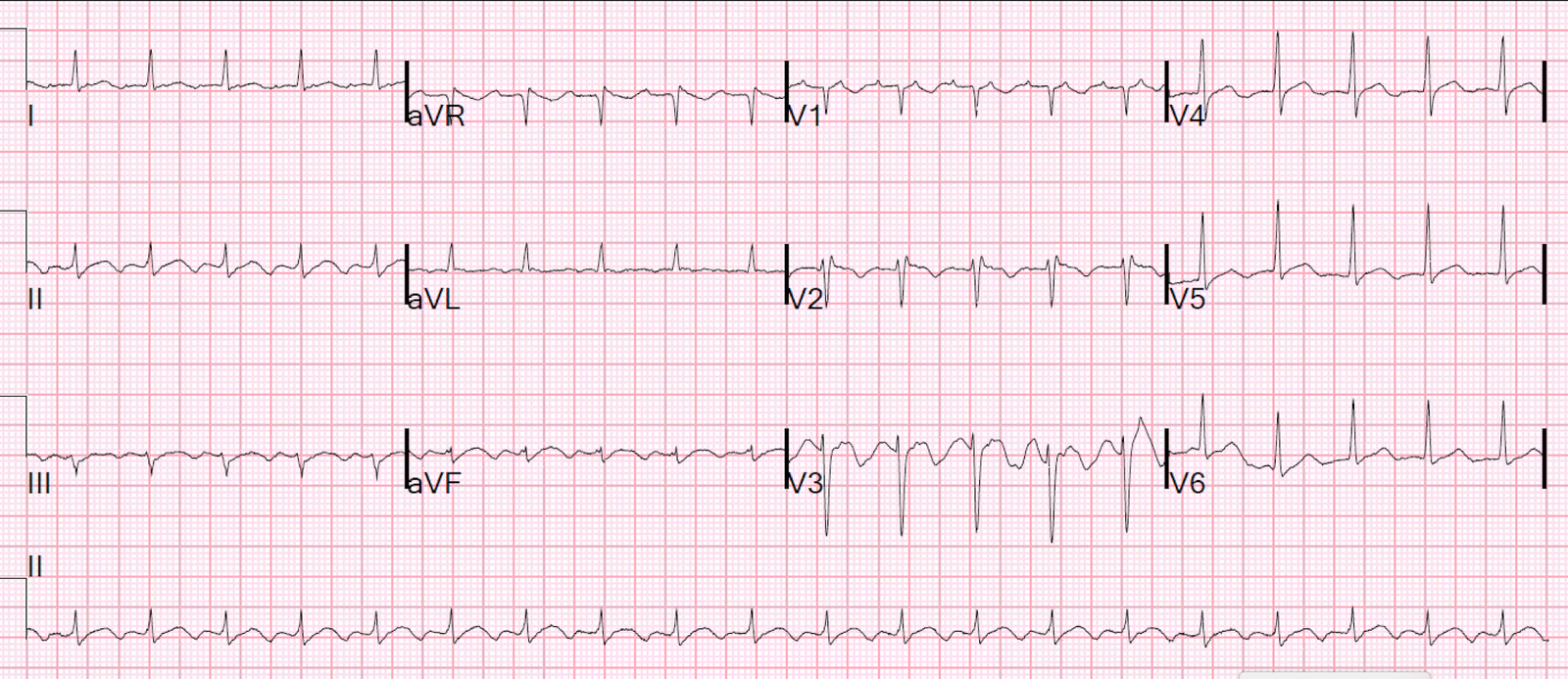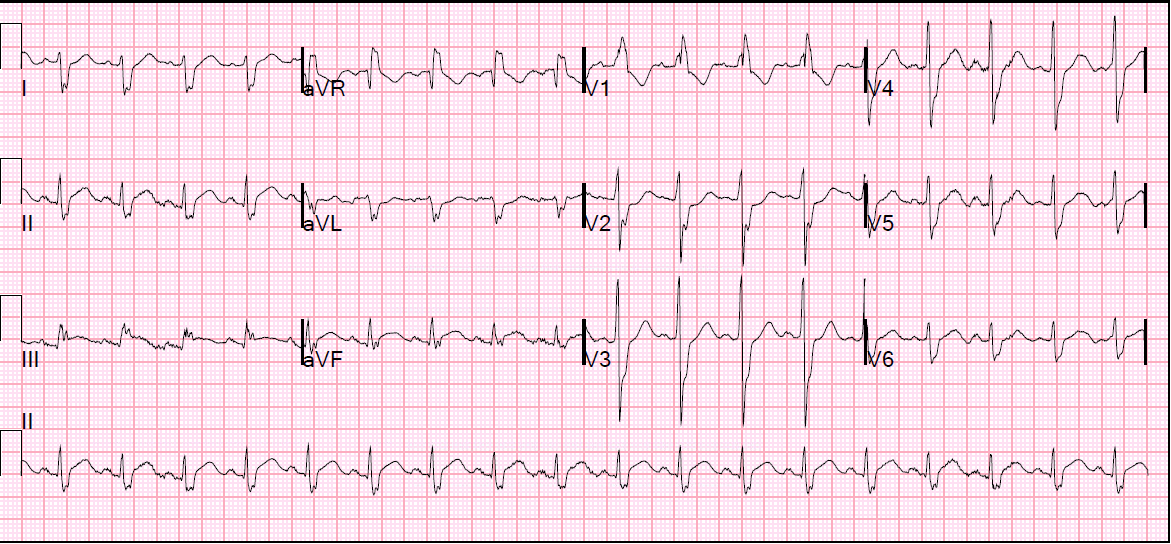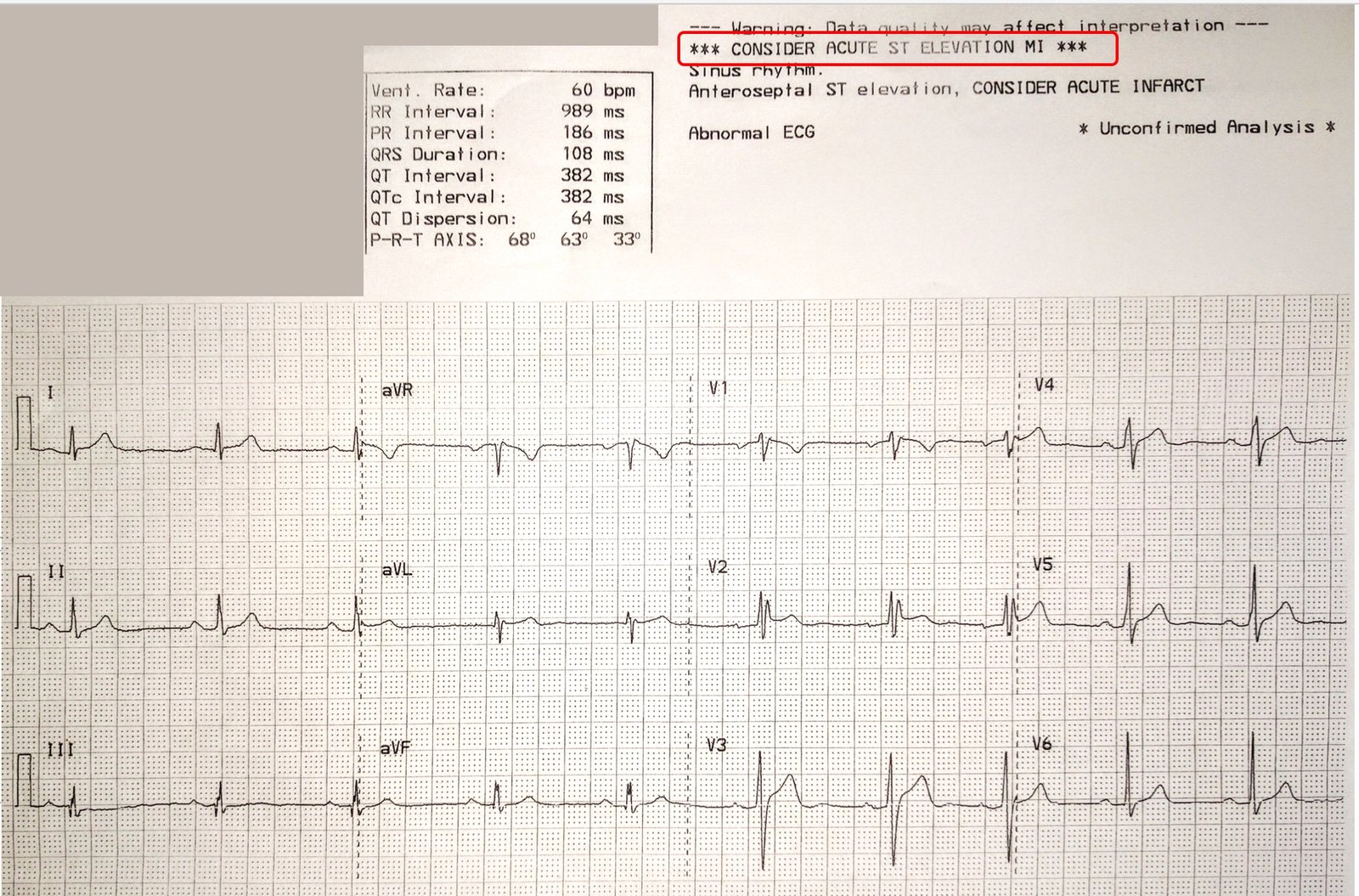A 50-something presented with bradycardia. No other history is available. Here is the EKG:
This is NOT really RBBB and LAFB. The flutter waves are not conducting through the AV node. This is not Flutter with 7 or 8 to 1 conduction. Instead, there is third degree (complete) AV block.
How do I know? When atrial flutter conducts, the QRS should occur at the same part of the flutter wave for every QRS. Every time the flutter circuit goes around the atrium it arrives at the AV node at the same part of the wave and, if the AV node is ready to conduct, that is when it conducts.
If you look closely, this does not happen:
Thus, there is complete AV dissociation.
[There are times when there is atrial flutter and Wenckebach, and the lengthening PR interval changes this otherwise fixed relationship between flutter waves and QRS, but it is far more rare than complete block AND it does not occur with 6:1 block.]
So this is atrial flutter with complete AV block and a regular escape rhythm.
Is it a junctional escape? A junctional escape should be around a rate of 40, and it should be narrow, unless there is a junctional escape + RBBB + LAFB. This is possible.
Much more likely is that this is a ventricular escape. Then why the RBBB and LAFB morphology? Because the escape is originating in the posterior fascicle. When there is a supraventricular rhythm with RBBB and LAFB, the impulse gets to the posterior fascicle only, then spreads to the ventricle from the posterior fascicle. Thus, RBBB + LAFB also, in a sense, originates from the posterior fascicle. In this case, there is no supraventricular stimulus. There is only the automatic escape, and it originates from the posterior fascicle.
Diagnosis: Atrial Flutter with complete, third degree, AV block. The long ST segment is probably due to hypocalcemia. Consider hyperkalemia.
Consider reversible causes (especially hyperkalemia or drug effect from beta blockers or calcium channel blockers before pacing).






What is the QT interval also?
hello sir,
thank you for this amazing ecg.
what about this extremely long qt-interval. is that normal for ventricular escape rhythm or is it long-qt-syndrome as well? what are your thoughts about that?
thx in advance.
best regards, flummy
Dr. Smith, the T axis seems to me right-superior, is it an expected finding in LPF escape?
never mind, just read your comment on the long qt –>hypocalemia, thx flummy
Can digoxin toxicity cause it as well?
Very long. Looks like a long ST segment. This would typically be due to hypocalcemia.
Probably due to hypocalcemia, as there is a long ST segment
No, but that is nonspecific.
It can cause just about anything, but typically it would lead to AV block with an accelerated junctional rhythm, not to junctional arrest with ventricular escape
It is always very difficult to measure the QT interval, not to mention the Qtc, in case of atrial arrhythmyas whose activity interfer with the interpretation of the QT interval. Anyway the present patient do need monitoring.
Thank you for another lesson!
Mario
Hypothermia may be a cause of bradycardia with long QT (due to a long ST segment)
Great ECG
Thnx Dr Smith
Great ECG
Thnx Dr Smith